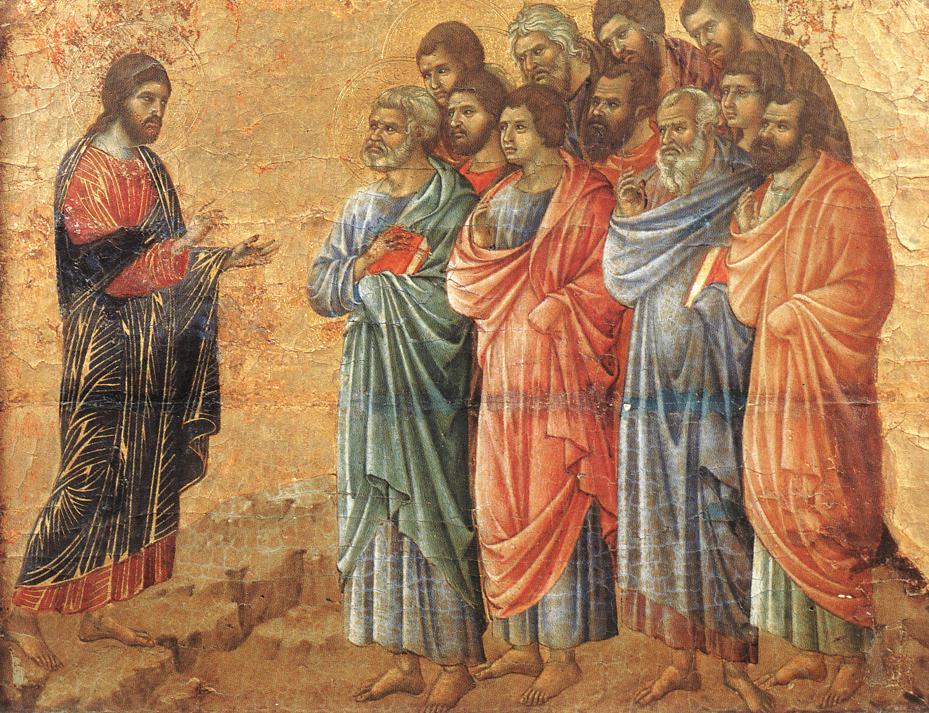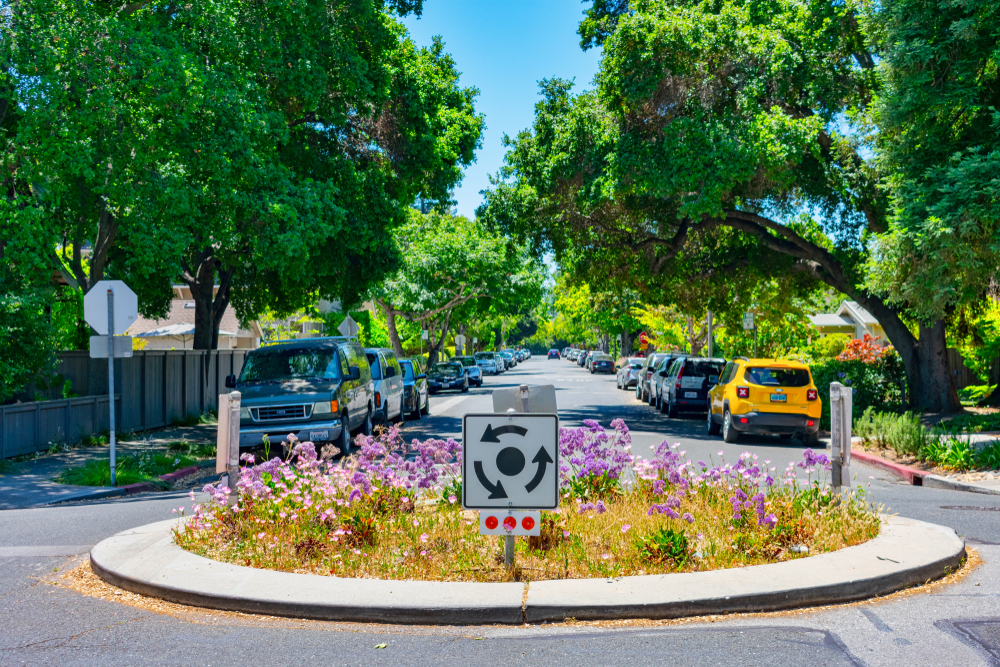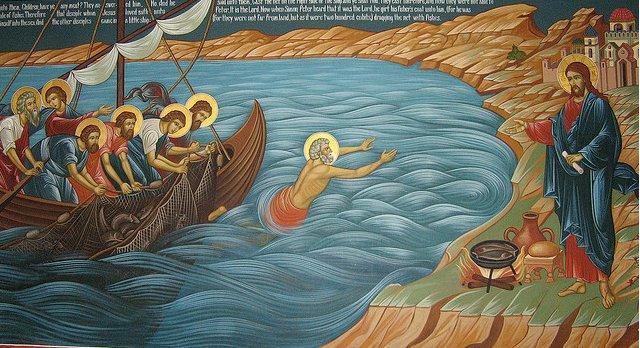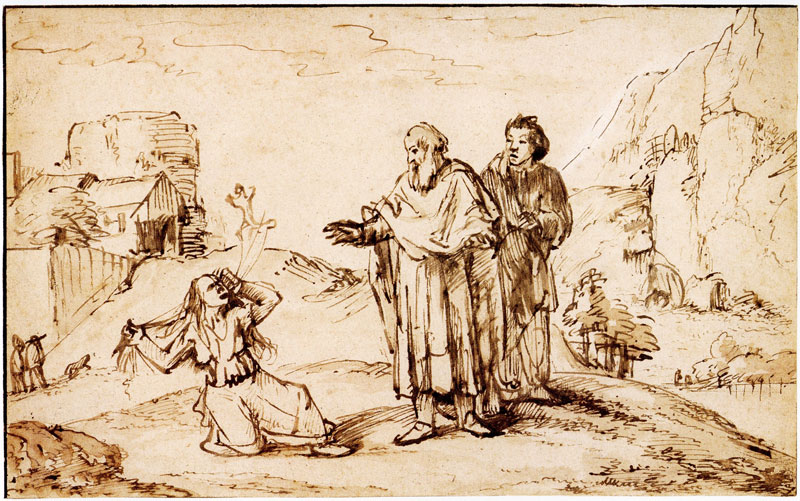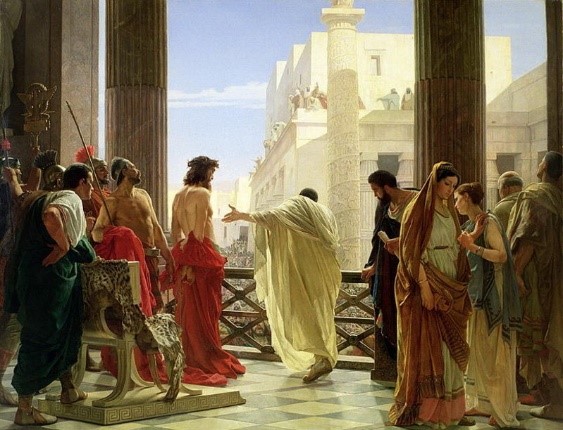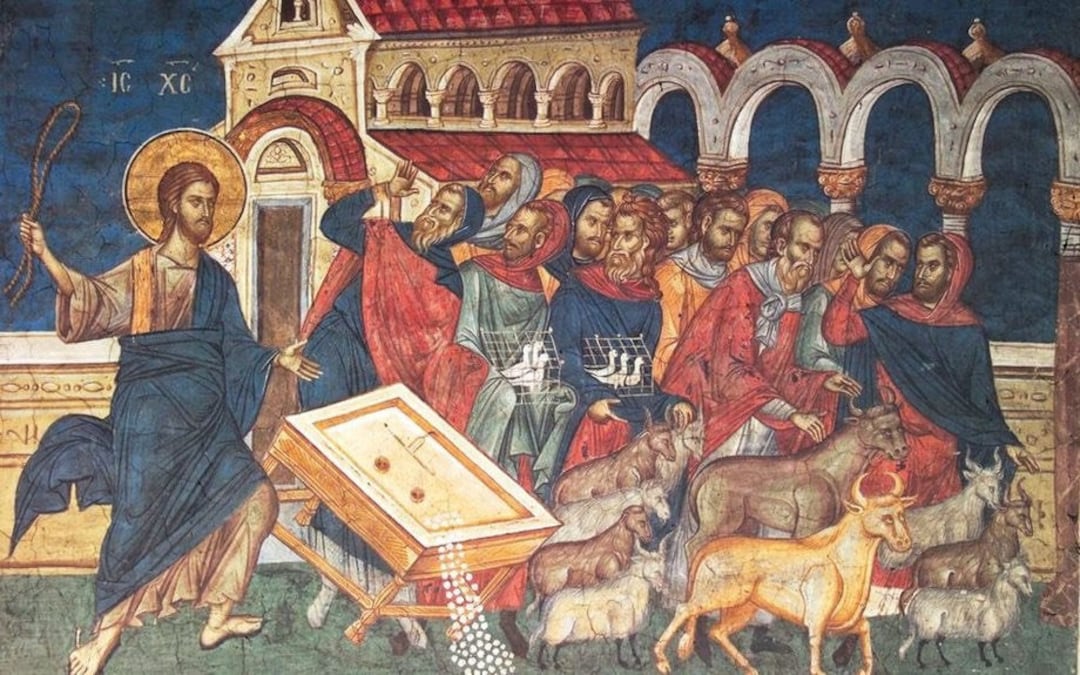A sermon preached at Niles Discovery Church, Fremont, California,
on Sunday, May 12, 2024, by the Rev. Jeffrey Spencer.
Scripture: Matthew 28:16-20 and Romans 15:1-7, 13
Copyright © 2024 by Jeffrey S. Spencer
The passage from Romans begins with an important reminder to stay humble: “We who are strong ought to put up with the failings of the weak and not to please ourselves.” Paul is talking about the challenges of living a faithful life, and he’s saying that those who manage to do a good job living a faithful life should not get all judgmental toward people who are struggling to live faithfully, and they certainly shouldn’t pat themselves on the back when they compare themselves to those who struggle.
I think there’s also an implication in here: that those who are “strong” (who don’t struggle to life faithfully) may not be strong forever. All of us can stumble. All of us can become suddenly “weak.”
There’s also a bit in here that reminds me that the faithful life isn’t so much about the individual as it is about the community, about the weak and strong together, helping each other live faithfully. “Together you may with one voice glorify the God and Father of our Lord Jesus Christ,” Paul wrote. And I find some resurrection hope in that call to community. Life is hard and we need each other.
And being young doesn’t protect you from the challenges of life. Did you know that one in six children and teens between the ages of 6 and 17 in the United States experiences a mental health challenge every year and that suicide is the second leading cause of death for people between ages 10-34, in the USA?[1] Back in 2019 (back before COVID), a group of Minnesota teens wanted to put on a “healing summit” in Minneapolis and hosted the event in a church. Their program contained theatrical expression and lessons on healing and resiliency, bringing in different groups to touch on the unique way mental health struggles impact kids, especially children and youth of color. This event made space to discuss trauma and to inform attendees about how trauma works. Here’s a report CBS did on the event.
This was a powerful event, and a bit part of what made it powerful was the advocacy of the youth themselves who took matters into their own hands to put on the event on, empowering their community with real and effective routes to healing and the destigmatization of mental illness.
I bring this up because life can be overwhelming at times – not just for children and youth, but for all of us. Stress and anxiety can contribute to the onset of a mental health crisis. A physiological change can be triggering (just ask any woman who’s dealt with postpartum depression). Traumas that haven’t been dealt with can be triggering. Even the change of seasons can bring on mental health challenges.
According to Matthew, Jesus’ penultimate words to the disciples are a directive. Typically called “the great commission,” Jesus tells his disciples “Go therefore and make disciples of all nations, baptizing them in the name of the Father and of the Son and of the Holy Spirit, and teaching them to obey everything that I have commanded you.” I’m not sure if this directive is called “the great commission” because it’s great as in awesome, or great as in huge. My suspicion is it’s the second of these. Go and make disciples of ALL nations. All of them. I want the disciples to say, “Don’t stress me out, Jesus!” But maybe Jesus intuited that response, because the directive isn’t the final thing he tells the disciples. The final thing he says is simply this: “And remember, I am with you always, to the end of the age.” I, for one, find that very reassuring – calming, even.
I am not alone. There may be lots to do. The commission to share the good news of Jesus may be great (as in huge). That doesn’t mean it’s the last word. The last word is that we are not alone. The last word is the Jesus is with us.
One of the primary ways I experience the presence of Jesus is in the community of his followers. A member of an online sermon preparation group I’m part of shared that her husband has been diagnosed with a progressive neurological condition known as PSP. “I have noticed,” she wrote, “how our church has become a communal space of healing for all as they have learned about the disease and have grown in their ability to face it head-on with us. At first, people were hesitant to talk to my husband and unsure how to relate, and now I watch more and more people going to talk to him before church. Imagine […] the worship ‘hour’ as communal and healing … calmed by a sense of belonging and community.”[2]
I think we all need, at least from time to time (and perhaps in this frenetic world more often than that) what Steve Harper calls “soul calming.” He started thinking about this when he learned about “traffic calming” strategies. Even if you’re not familiar with the term, I bet you’ve experienced them. The city replaces a simple intersection with a traffic circle, or they add stop signs, or they install bump-outs or speed bumps. These are all designed to make people drive slower, to drive more calmly.
Harper finds God-designed soul calming devices in nature. “Sunrise/sunset, leaves moving in the breeze, birds flying in formation, squirrels playing outside our window.”[3] He says that the spiritual disciplines of silence, solitude, and simplicity are also tools for soul calming. I was hoping to get one of those natural soul calming experiences over the past two night. Though I walked outside a bit several time over the past two nights, I think there was too much light pollution where I was to see the aurora. That doesn’t change the fact that looking a photos posted on social media from around the world has been soul calming for me.
In fact, having to rely on photos others have taken has helped me feel connected to people I don’t know from countries I’ve never been in. This shared experience being worldwide, this natural phenomenon ignoring national borders, has made me feel connected to a common humanity. And that has been very soul calming for me.
Before this sermon, I don’t know if I ever thought of calming as a manifestation of the resurrection. Now, I think it is. The calming that comes when I realize I need and can rely on community to bolster my faithfulness. The calming that comes when I realize that community empowers healing. The calming that comes when my anxieties and stresses are relieved by a shared experience. That calming that comes when I remember that I am not alone, that Jesus is with me and with us all, even to the end of the age. These are all manifestations of the resurrection power of calming. Thanks be to God.
[1] “Minnesota youth unpack their trauma: ‘We don’t have to be stuck in these emotions,” CBS Mornings, https://www.cbsnews.com/news/mental-health-care-minnesota-youth-hold-summit-to-deal-with-trauma-stop-the-stigma/ (posted 6 November 2019; accessed 7 May 2024).
[2] Stacy Tate in a sermon discussion group for this worship series, hosted by worshipdesignstudio.com.
[3] Steve Harper, “Soul Calming,” Ministry Matters, https://www.ministrymatters.com/all/entry/6475/soul-calming (posted 12 November 2015; accessed 7 May 2024).


